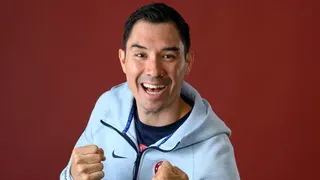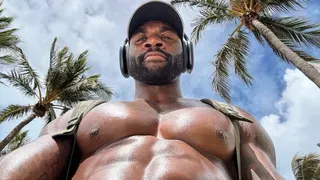December 2, 2010
Starbucks Aims for Average Joe with Seattle's Best
Robert Doyle READ TIME: 3 MIN.
PORTLAND, Ore. (AP) - Starbucks Corp. wants to appeal a bit more to the average Joe.
This week, the company will roll out a new line of its Seattle's Best Coffee to be sold at grocery stores and other retailers. It has a lighter taste and simpler selling approach that it hopes will attract coffee drinkers that Starbucks may have left behind.
The coffee giant acquired Seattle's Best about seven years ago. Until recently, has let the brand sit quietly on the sidelines. But as competition for coffee consumers has increased, Starbucks recognized an untapped opportunity.
It rebranded Seattle's Best earlier this year with a new logo and increased distribution plans. The coffee is now served in more than 40,000 locations - up from 3,000 earlier this year - including Burger King restaurants, AMC theaters and on Alaska Airline flights. Now it's focusing on folks making coffee at home.
"We can have some fun in a world that has taken coffee to this very complex place," said Michelle Gass, president of Seattle's Best. "In this category 'simple' is going to be the new 'bold.' "
The new line ranks coffee from one to five based on intensity of flavor. The coffee comes in brightly colored bags with the ranking prominently displayed to help draw customers who might be overwhelmed by the array of choices that now fill the coffee aisle.
The move is also intended to appeal to coffee drinkers who might want to make a step up in their coffee but don't like the more intense taste (and sometimes attitude) that often goes along with more expensive coffee.
Seattle's Best also is reducing the number of products it sells in stores from 26 to 10 as part of the new lineup, a major bonus for the company as it competes for shelf space at grocery stores.
"As big as Starbucks has become, we still have a small share of coffee consumption," said Troy Alstead, chief financial officer for Starbucks. "We set out to figure out how we can - modestly and over time - get more of people's coffee habits and coffee consumption and get it in more places than where we normally would."
That includes the estimated $4 billion market for coffee brewed at home. Starbucks said about 80 percent of coffee drinkers have coffee at home. While the company has improved its offerings in stores, with more of its beans available to shoppers and its new instant coffee Via line - it still had room to grow.
But the company recognized there are some consumers who aren't going to reach for its brand either because they aren't near a Starbucks cafe or simply prefer a different taste, price or feel from their coffee brand.
Seattle's Best built on the "smooth" flavor it was known for. It created a new roasting process for this line, making it significantly lighter than both the Starbucks and previous Seattle's Best line.
And it took a simpler approach that aims for a whimsical feel. The level 1 coffee, packaged in a light yellow bag, is described as one for "those who like to stare up at the blue sky then drink it."
The company is selling it at $6.99 a 12 ounce-bag - a few dollars less than a bag of Starbucks beans but above the cost for mass-marketed beans like Maxwell House or Folgers. This helps appeal to mid-tier coffee drinkers. Pricing is critical as many coffee makers are raising prices to cope with increased ingredient costs.
"I think the move makes a lot of sense for Seattle's Best," said Tim Calkins, a marketing professor at the Kellogg School of Management at Northwestern University. "Coffee is incredibly competitive, so brands need a distinct place to play."
Starbucks will continue to hold its higher-end position while creating a niche for Seattle's Best that could be a major growth opportunity for the company if it continues to invest in the brand.
Demystifying coffee may seem a strange move for a company that made lattes and baristas part of the national lexicon. But competition for mid-tier coffee drinkers is stiff as McDonald's and others up their offerings and consumers continue to keep a tight lid on spending.
Long-term New Yorkers, Mark and Robert have also lived in San Francisco, Boston, Provincetown, D.C., Miami Beach and the south of France. The recipient of fellowships at MacDowell, Yaddo, and Blue Mountain Center, Mark is a PhD in American history and literature, as well as the author of the novels Wolfchild and My Hawaiian Penthouse. Robert is the producer of the documentary We Are All Children of God. Their work has appeared in numerous publications, as well as at : www.mrny.com.







